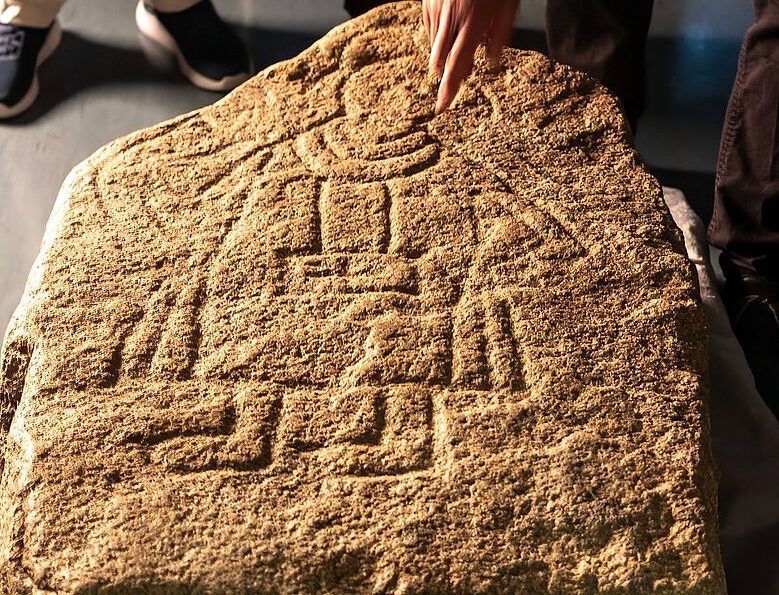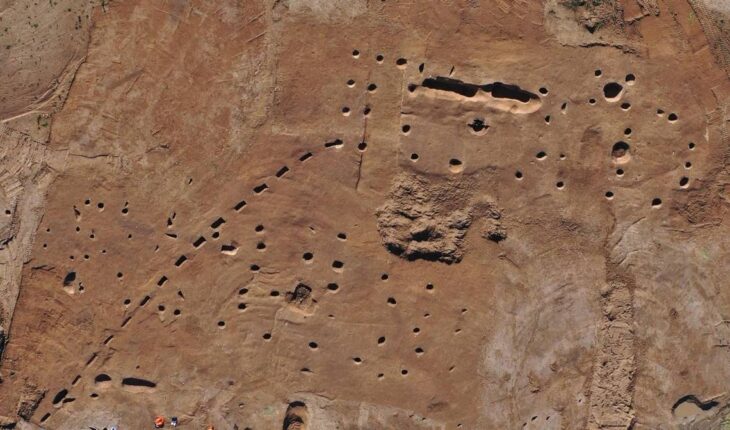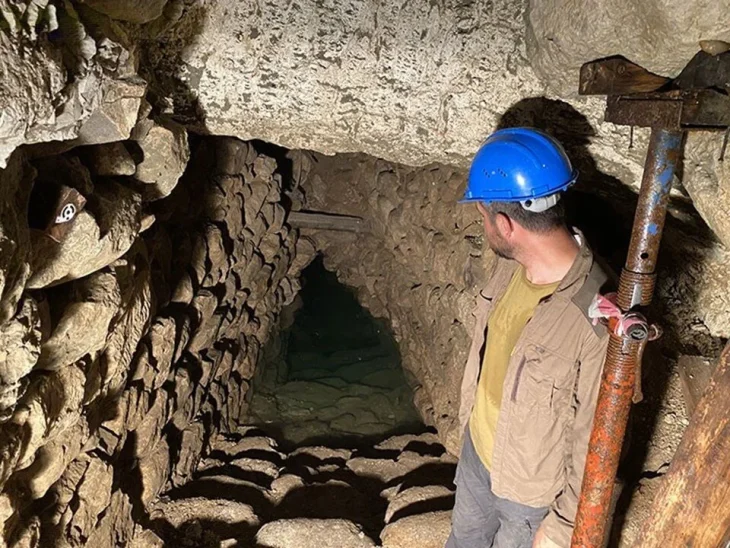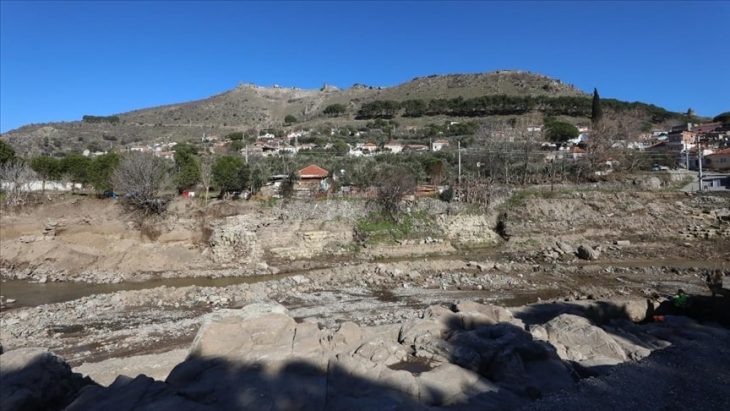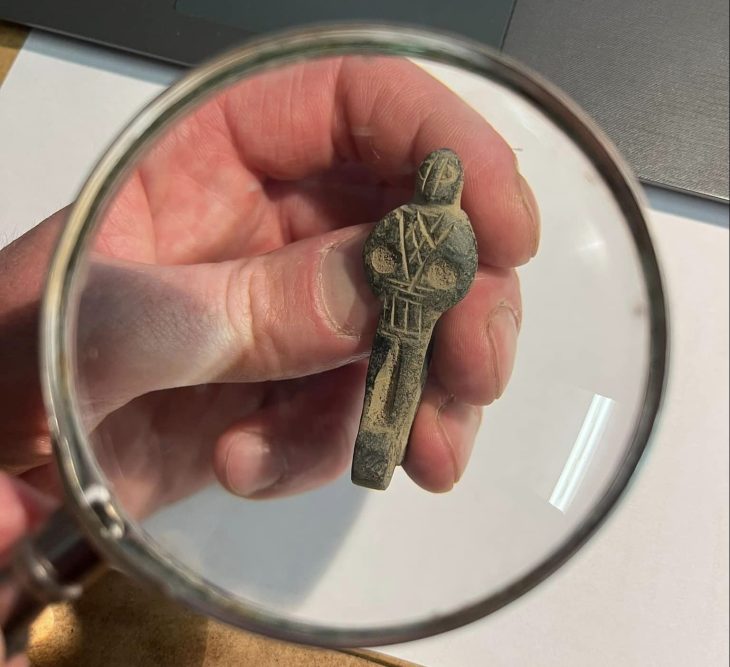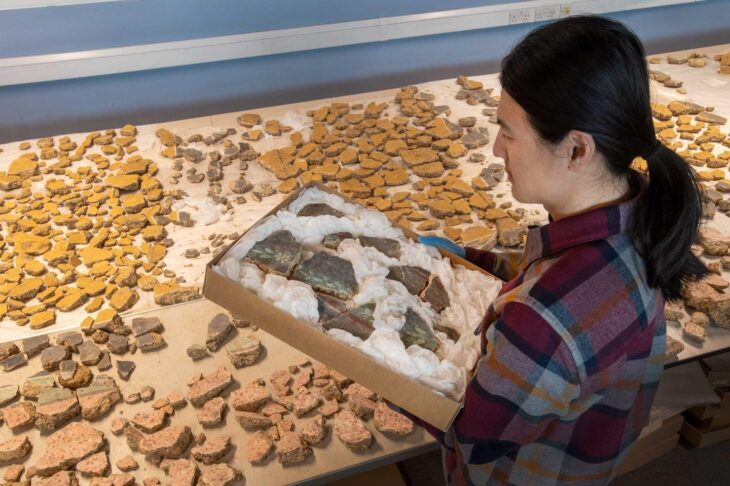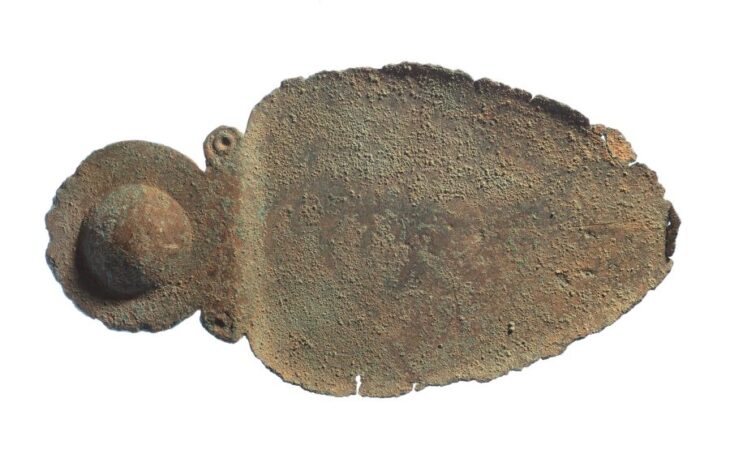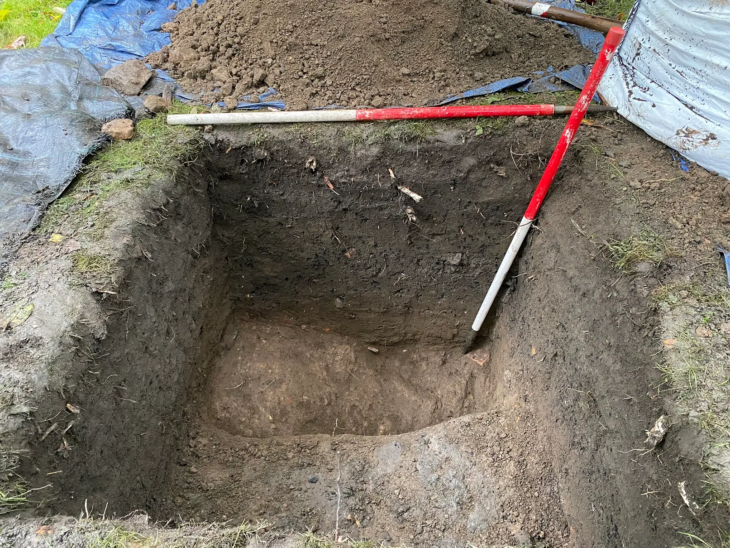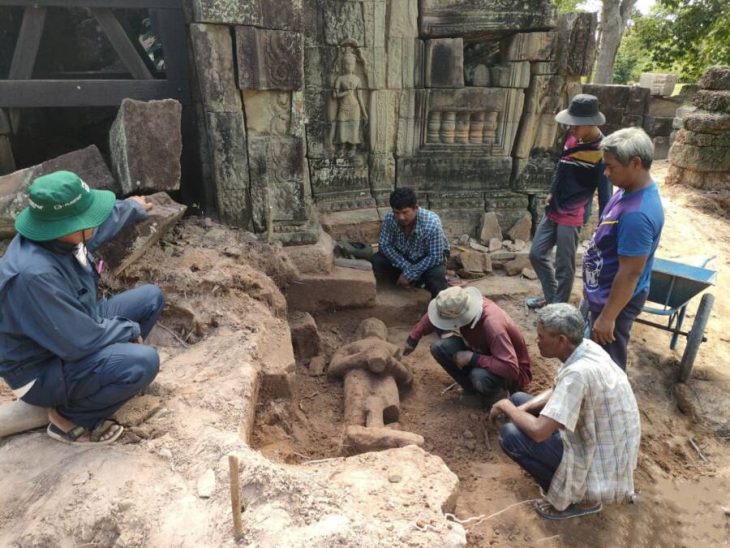During construction work in Klotzow (Vorpommern-Greifswald district), one of the most spectacular archaeological finds in Mecklenburg-Vorpommern in recent years has come to light: a boulder with a depiction of a man from the 12th century.
A presumably 900-year-old, very rare picture stone has been discovered during construction work on a house in Klotzow near Anklam. The hewn granite, one meter high, 60 centimeters wide, and 40 centimeters deep, shows an engraved human figure holding a cross in front of its belly.
A picture stone, image stone, or figure stone is a decorative stone slab, typically made of limestone, that was raised in Scandinavia during the Viking or Germanic ages. Gotland is home to the majority of these stones. Most likely, all of the stones were probably erected as memorial stones though they weren’t usually placed next to graves.
The discovery was made by Peter Wittenberg, who worked on the foundations of his house.
According to Peter Wittenberg, the owner of the house in Klotzow and the person who found the engraved stone, it was horizontally positioned in the ground next to the house wall, with the image facing up. At some point, it might have been used as a step. It could have had a bricked-up door at one point. The earth was only ten or twenty centimeters above the stone. Wittenberg believes the house was constructed in the eighteenth century and subsequently refurbished.
The stone was transported to Schwerin for examination and documentation and presented to the public on Wednesday by Culture Minister Bettina Martin and the state archaeologist Dr. Detlef Jantzen in the presence of the finder.
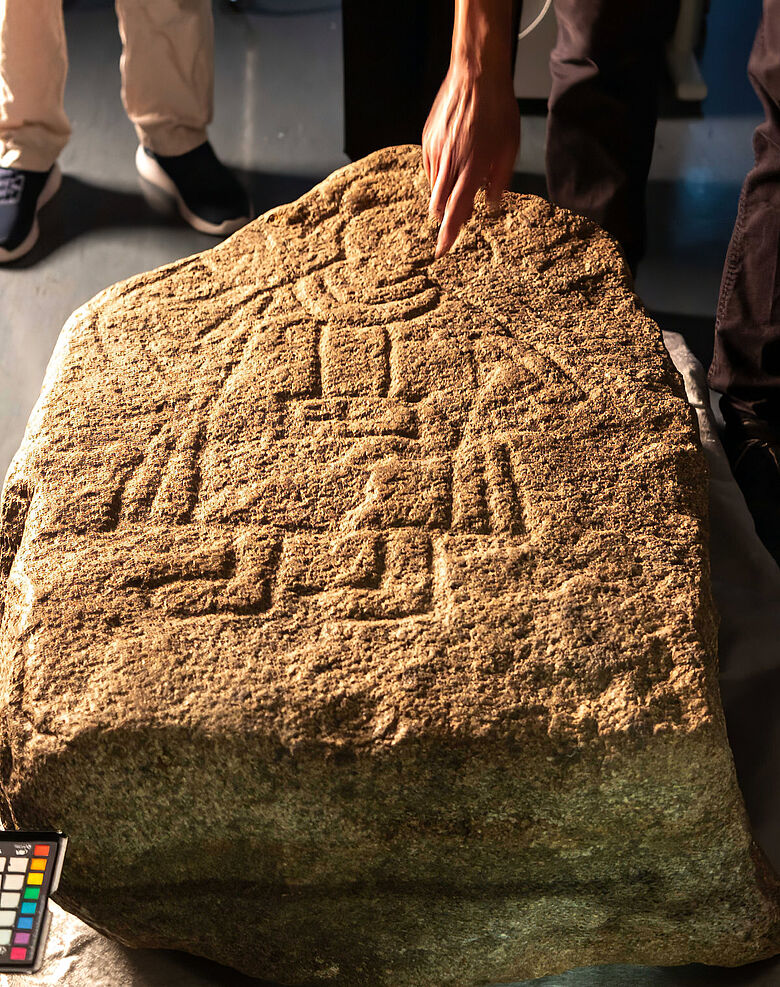
The newly discovered picture stone from Klotzow is the only one to date that shows a figure with a cross in front of its body. It therefore stands to reason that the figure is a Christian dignitary or at least a follower of Christianity. Such evidence from the Christianisation period is extremely rare.
The Christianisation of Pomerania goes back to Bishop Otto von Bamberg, whose first missionary journey will be 900 years old in 2024. To mark the occasion, the Wolgast Museum is hosting the exhibition ‘World in Transition – Otto von Bamberg and the Christianisation of Pomerania 900 years ago’, which also features numerous items on loan from the Archaeological Archive of the State Office for Culture and Monument Preservation.
State archaeologist Detlef Jantzen said that the person depicted is likely a clerical dignitary, possibly Bishop Otto of Bamberg (around 1060-1139), the missionary of Pomerania.
The cross hangs on a kind of scarf around the man’s neck – possibly a pallium, which the popes grant to high-ranking church dignitaries. Otto of Bamberg received a pallium in the year 1111, said Jantzen.
Image stones are very rare, according to the state archaeologist. “We had five in Mecklenburg-Vorpommern, two in Altenkirchen and Bergen on Rügen, two in Wolgast and one in Grüttow near Stolpe on the Peene, the Wartislaw stone,” he said. Further finds are known from Ermland and Masuria in Poland – a total of 20 pieces. The stone from Klotzow weighs half a ton, according to the reports.
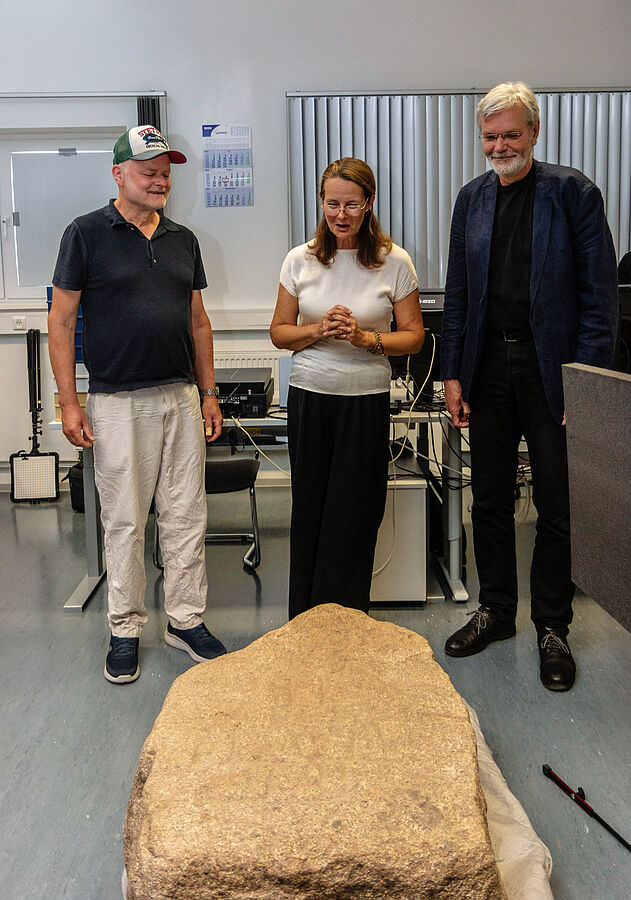
Although the location is still unknown, Jantzen believes the stone was placed there as a memorial. Following the discovery three weeks ago, archaeologists wish to investigate Klotzow in greater detail. There are traces of a former church or chapel in the village, as well as a ferry landing for the island of Usedom across the Peene River.
A 3D model of the stone is to be created. Then the drawing can be more precisely defined. So far, it is unclear what the depicted man is holding in his right hand.
Two missionary trips to Pomerania were made by the subsequently sainted Otto of Bamberg in the years 1124 and 1128. He introduced Christianity to the modern-day Vorpommern on his second expedition. Historical accounts indicate that he was on Usedom as well. He may have crossed over from Klotzow. But as of right now, that is just conjecture.
Cover Image: The Slavic picture stone from Klotzow. Photo: Christian Moeller / Ministry of Science, Culture, Federal and European Affairs Mecklenburg-Vorpommern
Ministerium für Wissenschaft, Kultur, Bundes- und Europaangelegenheiten Mecklenburg-Vorpommern

